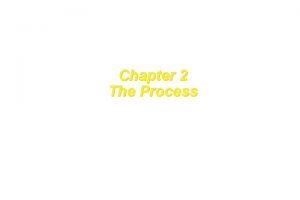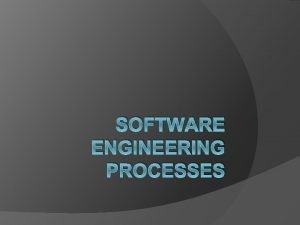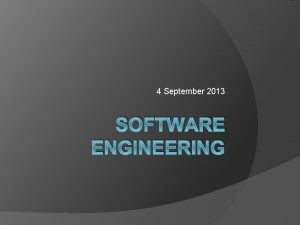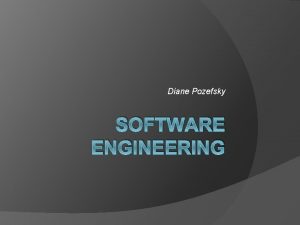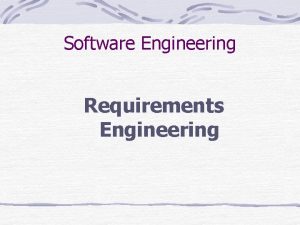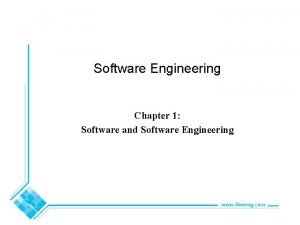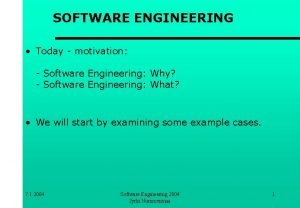Towards Common Standards for Studies of Software Engineering










- Slides: 10

Towards Common Standards for Studies of Software Engineering Tools and Tool Features Timothy C. Lethbridge University of Ottawa

Premise: It is desirable to guide researchers studying SE tools n Proposal: Create an inventory of practices to guide such studies n Researchers could then create papers that would be ¡ ¡ ¡ More comparable More easily reviewable More indexable

Types of Evaluation Commonly Found in Tools Papers ¡ ¡ ¡ ¡ n Case studies papers: ¡ n a) None - just a description b) Includes rationale c) Demonstration of adoption d) Anecdotes and lessons learned e) Informal studies - includes descriptive stats f) Formal experiments involving students g) Formal experiments involving practitioners Some combination of b-e Experimental papers: ¡ ¡ f and g but beware of overconfidence in results

Inventory of Measures. n The following are purely examples that might be found in such an inventory ¡ ¡ M 1. Time taken to perform a given task. M 2. Amount of a given task completed correctly in a fixed time. n ¡ ¡ The fixed time might depend on the task. M 3. Errors made in a given task M 4. Subjective answers on a scale to specific questions: n (Questions to be listed in the inventory)

Inventory of study types n ST 1. Usability evaluation of a specific feature or tool implementation. ¡ n Help ensure that results from other study types are not confounded purely by poor usability. Provides evidence for these research questions: ¡ Q 1 a To what extent is the feature or tool usable? n ¡ Measures: M 1, M 2 and M 3 (compared against a threshold). Q 1 b What usability defects are present and which ones should be repaired? (qualitative).

Study types - continued n n ST 2. Comparison of a small number of different feature implementations, each providing roughly the same functionality. Provides evidence for these research questions: ¡ Q 2 a What is the best user interface for a certain feature? n ¡ Measures: M 1, M 2, M 3, M 4 (measured separately for each implementation) Q 2 b What comments do users have about each implementation? (qualitative)

Study types - continued n n ST 3. Comparison of two alternative feature sets that achieve roughly the same goal, but in different ways. Provides evidence for these research questions: ¡ n Q 3 What is the 'best' functionality for a certain task? Measures: M 1, M 2, M 3, M 4 ¡ Measured separately for each feature set

Study types - continued n n ST 4. Comparison of presence and absence of a feature (or of a small feature set) in a tool Provides evidence for these research questions: ¡ Q 4 a Is the feature worth including in a final tool set? n ¡ Measures: M 1, M 2, M 3 (measured separately for a tool with presence or absence of the features) Q 4 b What benefits are provided by the feature? (qualitative)

Study types - continued n n ST 5. Determination of which specific combinations of features are most useful as the context varies Provides evidence for these research questions: ¡ n Q 5 Which features should be available in a given tool so the tool can be used in a variety of contexts? Measures: M 1, M 2, M 3, M 4 a, M 4 c ¡ Measured as the feature sets and contexts are varied in different combinations

Study types - continued n ST 6 Comparison of entire tools ¡ ¡ n Provides evidence for these research questions: ¡ n Incorporating sets of features Less abstract than ST 3 Q 6 Which of several tools is best used for a given task? Measures: M 1, M 2, M 3, M 4 ¡ Measured separately for each tool
 Rethinking education: towards a global common good?
Rethinking education: towards a global common good? Ieee software engineering standards
Ieee software engineering standards Umbrella activities in software engineering
Umbrella activities in software engineering Computer based system engineering
Computer based system engineering Forward engineering and reverse engineering
Forward engineering and reverse engineering Paradigm shift from women studies to gender studies
Paradigm shift from women studies to gender studies Software maintenance in software engineering ppt
Software maintenance in software engineering ppt Frank maurer
Frank maurer What is software metrics in software engineering
What is software metrics in software engineering Software crisis of 1960s
Software crisis of 1960s Examples of product metrics
Examples of product metrics


